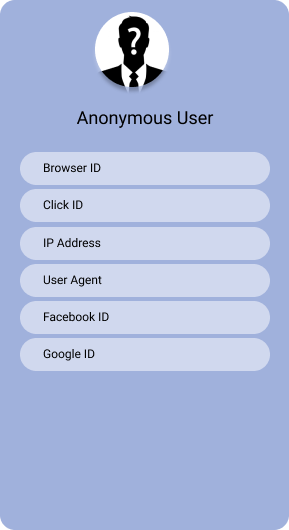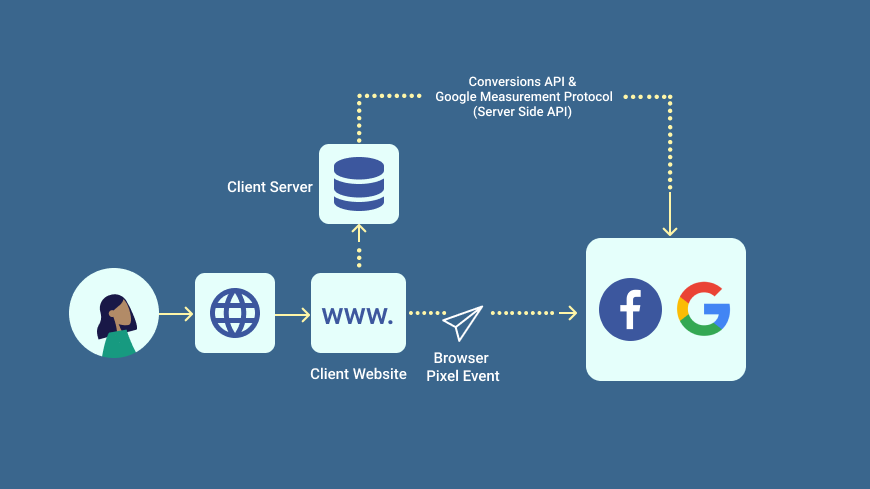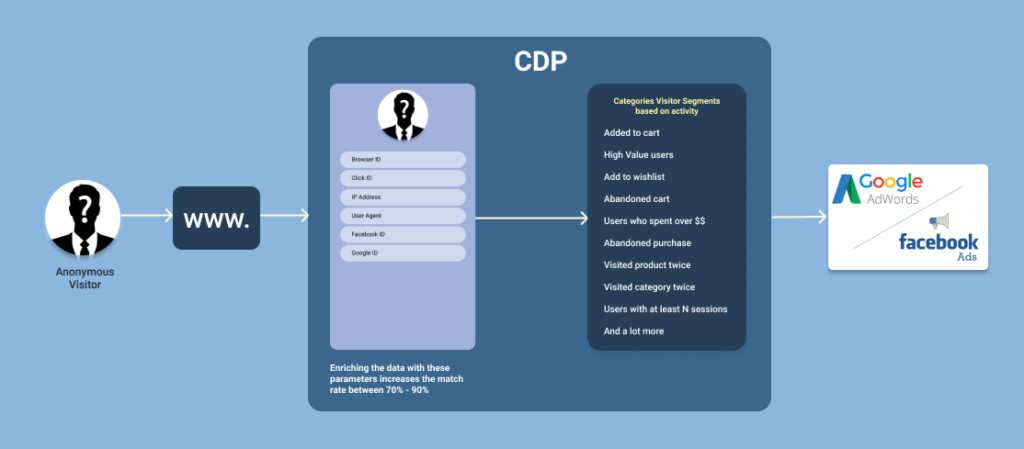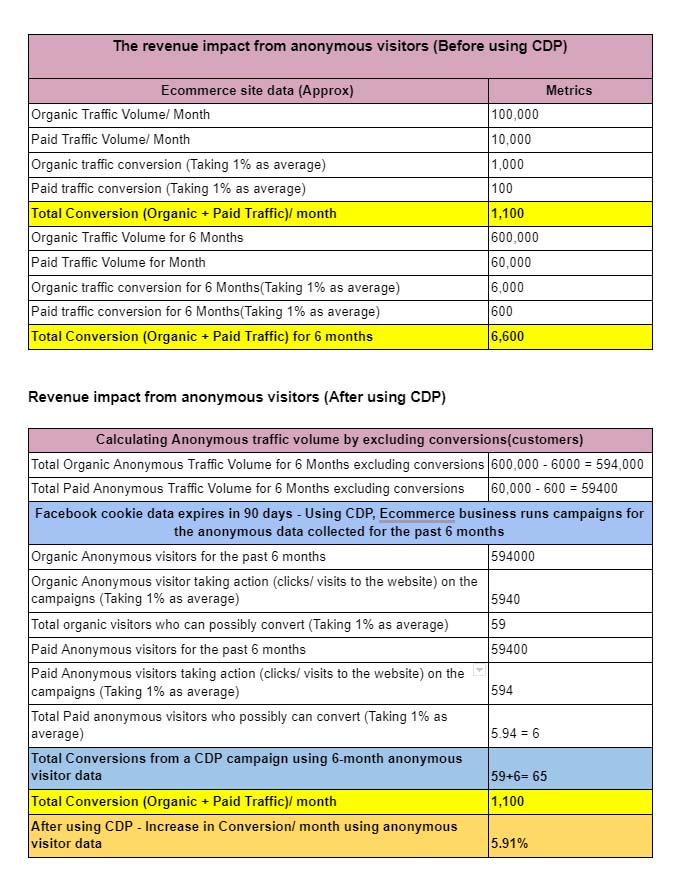In a time when third-party cookies are phased out by major browsers like safari, firefox, and google (planning to phase out by 2022). The ROAS among eCommerce stores is visibly getting lesser due to the limitations of pixel tracking.
While reading this content, just compare your own ROAS to your previous quarters. I’m sure there’ll be a dip in the current quarter’s ROAS. and the dip is not gonna end anywhere soon.
The solution to these problems lies in the proper utilization of e-commerce stores first-party data
First-party data can be differentiated into
👉 Anonymous visitors
👉 Known visitors (Customers/ Subscribers)
Who are anonymous visitors?
98% of the audience who visits your website won’t give you any data, i.e name, email address, etc. and this audience group is called anonymous visitors
Why anonymous visitor data is important for an ecommerce business?
The amount of effort put in by ecommerce stores to bring in this 98 % traffic goes vain, as most of them fail to convert them as customers. Even 2-3% of conversions from the anonymous visitor group can up the store’s revenue game by more than 2x times.
The following steps show how an ecommerce business can properly utilize its anonymous visitor traffic and convert them into customers
Here’s how as a business you can properly utilize your first-party data and maximize your ROAS using CustomerLabs No-Code 1PD Ops
Collect anonymous visitor data
Many eCommerce businesses would simply collect anonymous data from their store via cookies and won’t make proper use of it.
1PD Ops lets you collect anonymous visitor data and build a 360-degree profile for them based on the following parameters Browser ID, Click ID, IP Address, User-Agent, Facebook id, Google id, etc.
Instead of sharing a bland profile of anonymous visitors collected via cookies from your e-commerce store to the ad platform. sharing this detailed profile of anonymous visitors collected by 1PD Ops with ad platforms helps increases the chances of ad platforms(Google, Facebook) match with the right persona.

Segment data
Based on the anonymous visitor data collected, you can segment the data based on categories like (Added to cart, High-Value users, Abandoned cart, Visited product twice and various other custom-category segments based on your requirement).

Syncing data with Facebook and Google using Conversions API and GMP
A vast majority of advertisers track their visitors online by placing third-party cookies on web browsers. With a focus on consumer privacy first, GDPR and other privacy regulations indicate that in the future tracking consumers using third-party cookies will no longer be available. Along with the privacy concerns & Apple iOS’14 update is all set to disrupt Google and Facebook Ads Targeting.
The solution to these problems is implementing Facebook Conversion API and Google Measurement Protocol. By using CustomerLabs you can implement Conversions API in less than 60minutes and lets you measure your conversions seamlessly.

After segmenting and syncing the data. Here’s how by using 1PD Ops you can ace your revenue goals using these strategies.
Retargeting anonymous visitors across various platforms like Google and Facebook
Traditionally the anonymous visitor data collected last only for 90 days on Facebook. Once the cookie data is removed by Facebook after 90 days you have to start building it from the scratch and this process goes on forever.
With 1PD Ops, after building a 360-degree profile for anonymous visitors, the data will be synced with Facebook and other platforms as an event everyday which lets the cookie data remain refreshed forever helping advertisers focus on important things like retargeting ads, optimizing them and increasing revenue rather spending time and money on bringing in visitor data alone.

Measuring ROAS and Revenue Calculation
Here’s a statistical interpretation that shows the effectiveness of retargeting campaigns after using 1PD Ops




